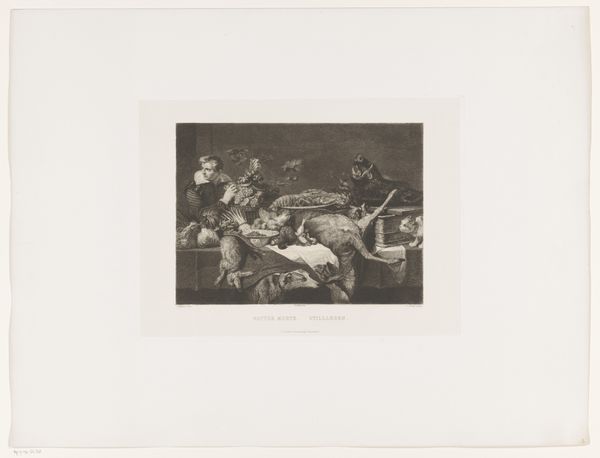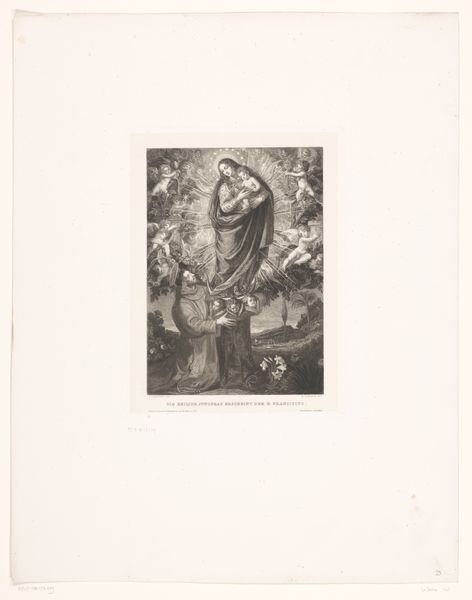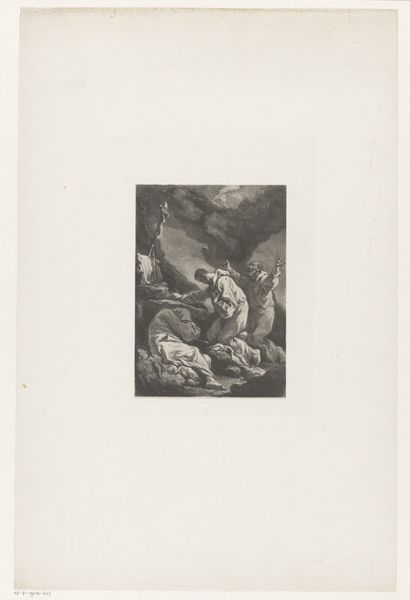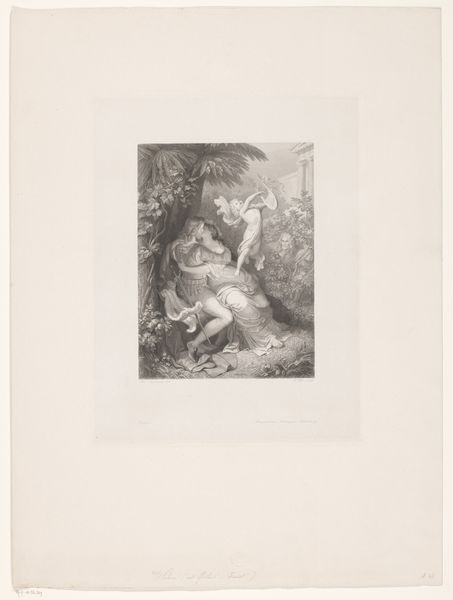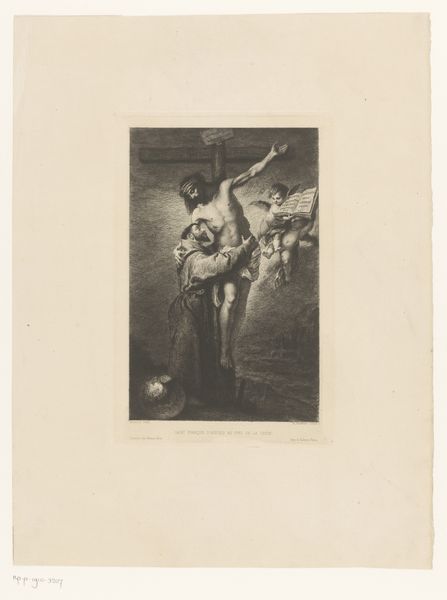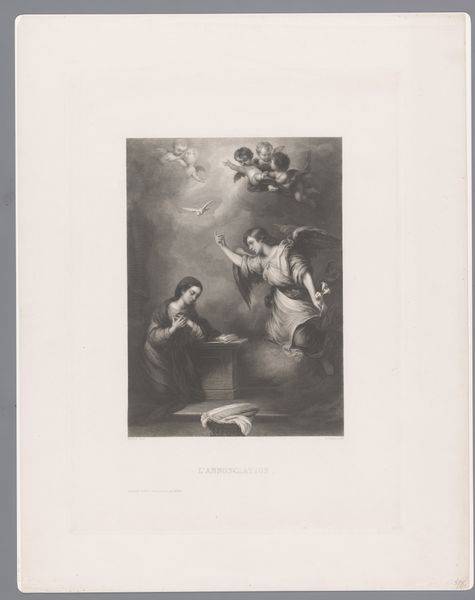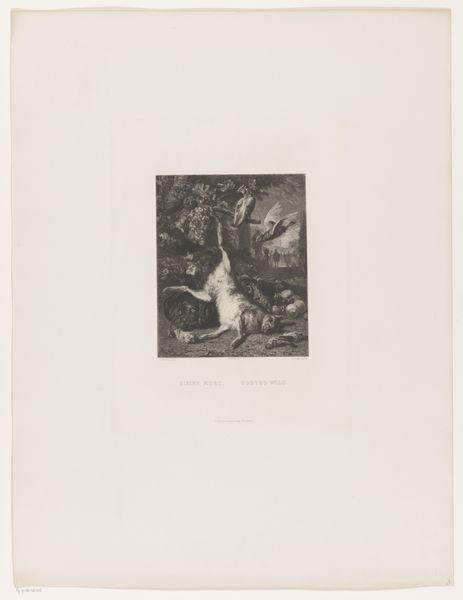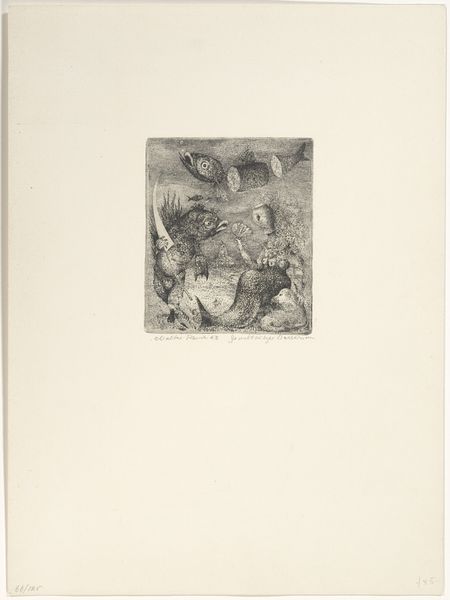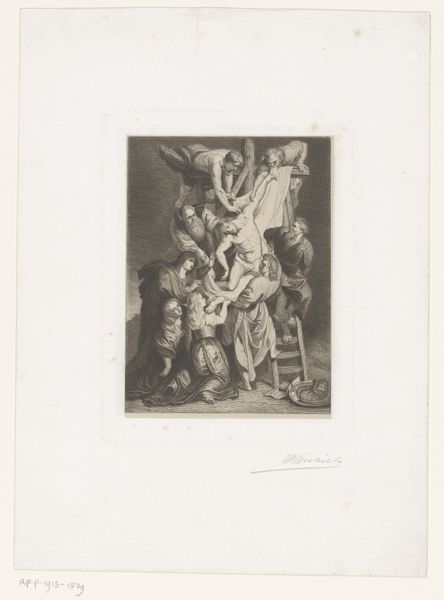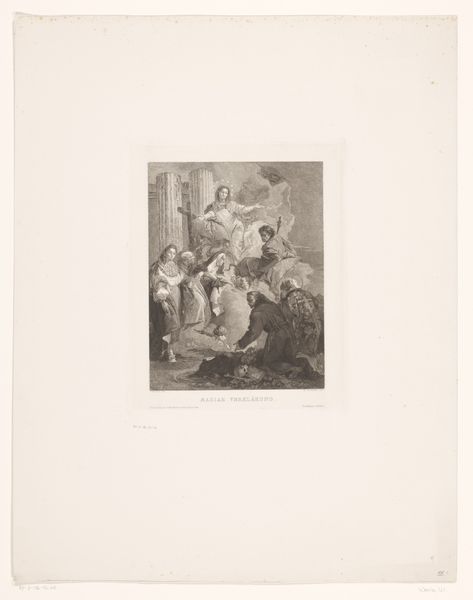
engraving
#
pencil drawn
#
light pencil work
#
figuration
#
pencil drawing
#
romanticism
#
line
#
history-painting
#
engraving
Dimensions: height 430 mm, width 290 mm
Copyright: Rijks Museum: Open Domain
Amédée Geille made this print, depicting Michael slaying Satan, in France, sometime in the first half of the 19th century. The image uses well-established visual codes. Archangel Michael, the leader of God’s army, triumphs over Satan, cast as a monstrous figure writhing in defeat. Consider the historical associations of this subject. France in this period underwent major social upheavals, including the Revolution. Even though the Republican government had separated church and state, the Catholic Church remained a powerful institution with deep roots in French society. So, what is the public role of this image? The figure of Michael as a powerful warrior may have been intended to reassure those who felt threatened by the secular forces of modernity. Perhaps it was meant to bolster traditional hierarchies and encourage obedience to authority. Historians can use parish records, political pamphlets, and institutional archives to understand the complex social forces operating at the time this print was made. By examining the institutions and social conditions surrounding its production, we can see how art reflects and shapes cultural values.
Comments
No comments
Be the first to comment and join the conversation on the ultimate creative platform.
